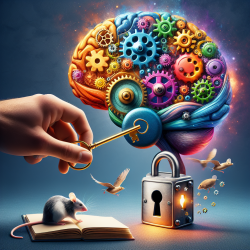Introduction
As a speech-language pathologist, understanding the nuances of mood rhythms can significantly enhance your ability to create effective therapeutic interventions. The research article titled "The Mood Rhythm Instrument: development and preliminary report" provides valuable insights into the daily rhythms of mood symptoms and their implications. This blog aims to explore how these findings can be applied to improve outcomes in child development, particularly in online therapy settings.
Understanding Mood Rhythms
The Mood Rhythm Instrument (MRI) was developed to assess the daily rhythms of mood symptoms, a critical factor in understanding mood disorders. The study found that somatic symptoms, such as sleepiness and alertness, often peak in the morning, while cognitive-affective symptoms, like self-esteem and social interactions, have more varied peaks throughout the day. These rhythms are crucial for understanding how mood states fluctuate and impact daily functioning.
Application in Child Development
Incorporating the understanding of mood rhythms into therapeutic practices can offer several benefits:
- Timing of Interventions: By aligning therapy sessions with the child's peak cognitive performance times, therapists can maximize engagement and effectiveness. For instance, scheduling sessions in the morning when alertness is at its peak could enhance learning outcomes.
- Personalized Therapy Plans: Recognizing individual differences in mood rhythms allows for personalized therapy plans that cater to the unique needs of each child, improving the likelihood of successful outcomes.
- Monitoring Progress: Regular assessments using tools like the MRI can help track changes in mood rhythms, providing data-driven insights into the child's progress and the effectiveness of interventions.
Encouraging Further Research
While the Mood Rhythm Instrument provides a promising framework, further research is necessary to validate its use in diverse populations and settings. Practitioners are encouraged to engage in research initiatives that explore the application of mood rhythms in different therapeutic contexts, particularly in online therapy where environmental factors can vary significantly.
Conclusion
The Mood Rhythm Instrument offers a novel approach to understanding and utilizing mood rhythms in therapeutic settings. By integrating these insights into practice, speech-language pathologists can enhance their interventions and contribute to better developmental outcomes for children. To delve deeper into the research and explore the potential of mood rhythms, practitioners are encouraged to read the original research paper: The Mood Rhythm Instrument: development and preliminary report.










